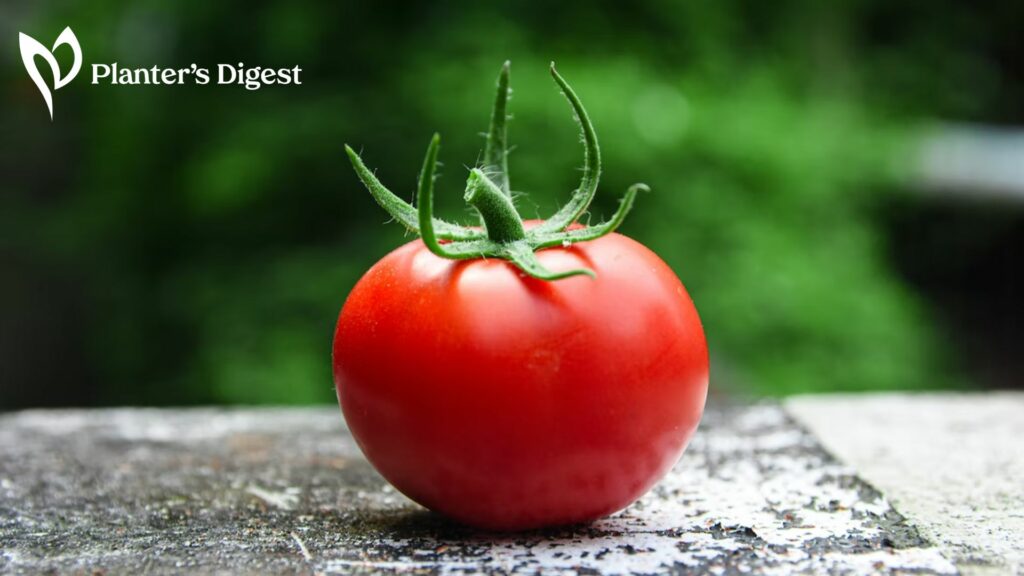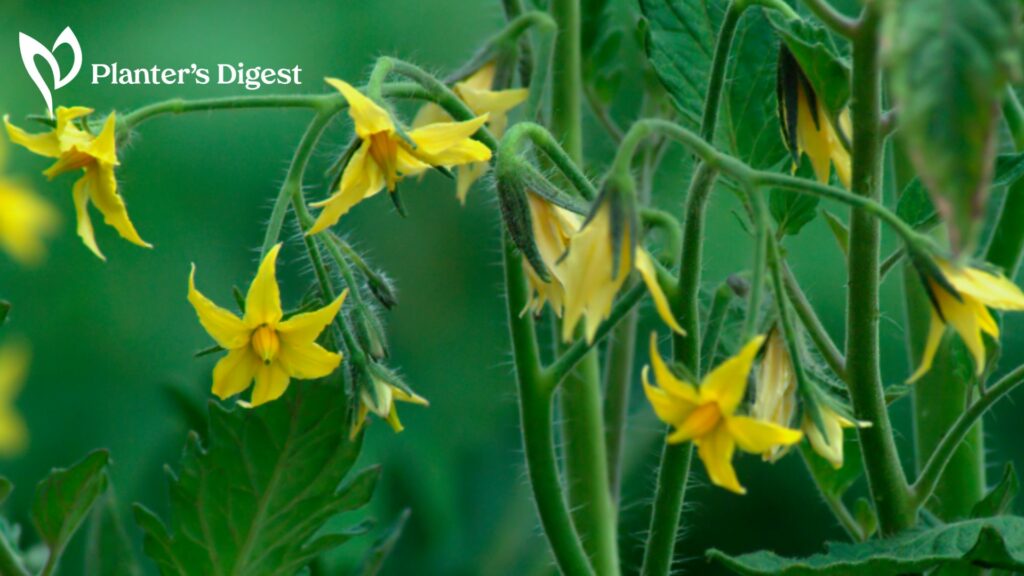
John Denver says there are two things you can’t buy in this world: true love and home-grown tomatoes.
Just like him, we also can’t get enough of tomatoes. Lucky for you, we have a few more tricks up our sleeves to help you get the most fruit out of a single tomato plant.
Read on as we show you how to make your tomato plants produce fruits multiple times in every growing season.
Can tomato plants bear fruit more than once?
Tomato plants can bear fruit more than once in a growing season if you plant indeterminate tomato varieties.
Indeterminate tomatoes are also called vining varieties because they tend to grow beyond 10 feet tall.
Because of their long vines, they produce fruits multiple times in a growing season. Sometimes, they grow new tomatoes just when the previous batch begins ripening.
Indeterminate tomato varieties include Sungold, Sweet 100, Yellow Pear, Black Cherry, Juliet, Early Girl, Red Grape, Cherokee Purple, Rose Organic, Brandywine, Klack Krin and San Marzano tomatoes.
Determinate tomato varieties, on the other hand, produce only one batch of fruits, which ripen within 4 to 5 weeks from planting. They’re also known as bush varieties for being compact, growing between 4 to 5 feet.
Since they ripen simultaneously, most gardeners preserve them by making large batches of pasta or pizza sauces.
Examples of determinate tomato varieties are Celebrity, Chiquita, Gold Nugget, Oregon Spring, Paisano, Plum Regal, Sunrise Sauce, Valley Girl and Washington Cherry tomatoes.
How long does it take for tomato plants to bear fruit?
It takes tomato plants between 90 to 142 days (13 to 20 weeks) from sowing the seeds in your garden to bear fruit.
Remember, it takes 42 days (6 weeks) to germinate tomato seeds indoors and to grow them ready for transplanting. After transplanting, your tomato seedlings will take 48 to 100 days (7 to 14 weeks) before they can bear fruit.
You’ll also have to consider the tomato variety to know how long it takes before the tomato plant bears fruit. For instance, indeterminate Brandywine tomatoes take 100 days (14 weeks) after transplanting to ripen.
When do tomato plants stop producing fruit?
Indeterminate tomato plants stop producing fruits when they encounter pests, diseases or frost.
In contrast, determinate varieties stop bearing fruits after producing one batch of tomatoes in a growing season and when frost begins to set in.
Why are your tomato plants not bearing fruit?
Lack of pollination is the main reason why tomato plants do not bear fruit. Without pollination, no flower fertilization causes plant seed development and fruit production.
Tomato flowers can be pollinated naturally, through the winds, bees and other animal pollinators, or by hand.
But sometimes, high or low humidity levels prevent pollination. High humidity causes the stamen (male) of the flower to be sticky and difficult to release. In contrast, low humidity prevents the pollen from sticking to the pistil (female) of the flower.
If you use too much pesticide on your tomato plant, they may repel even pollinators leaving none to pollinate your tomato flowers. Otherwise, you can try hand pollination (tomato pollination) to make sure the pollen is released from the center of the flower.
How to Maximize Fruit Production in Tomato Plants
Here are our top eight tips on how to make sure your tomato plants will bear fruit more than once this growing season.
1. Choose indeterminate tomato varieties.
When you plant indeterminate tomato varieties, you get to enjoy harvesting fruits continuously throughout the season.
These large vining tomato plants have no predetermined life cycle, so they will keep bearing fruits until the plant dies back due to frost.
This variety includes Black Cherry Organic, Julie, Yellow Brandywine, Cherokee Purple Organic, Beefsteak, Big Boy, Sungold, and Sweet Million tomatoes. Plant any of these and enjoy them with your salad, soups and sandwiches.
2. Prune the bottom leaves.
Pruning may seem simple, but it will go a long way in boosting the tomato plant’s fruit production.
When fewer leaves exist, more plant energy will be used in fruit production instead of growing leaves.
The most crucial parts of the plant that must be constantly pruned are its bottom leaves. Removing them protects the plant from the growth of bacteria or fungi that cause plant diseases.
Without these leaves, there’s less need to worry about water splashing on the bottom leaves, which become a breeding ground for infestations. So, when your tomato plant grows a few feet tall, regularly trim the bottom leaves near the soil.
3. Pollinate your tomato plants.
Tomato plants are self-pollinating, meaning they have all they need. By this, we mean a male and female reproductive organ to fertilize tomato flowers and kickstart fruit production.
But that doesn’t mean they don’t need help anymore. Sometimes, the wind and animal pollinators fail to fertilize their flowers.
This may be because of the location, like in a greenhouse where there’s little wind breeze, or because of the humidity preventing pollen release.
Whatever the reason, you can always resort to hand pollination to ensure your tomato flowers get pollinated in time. Afterward, the flowers will develop seeds that become plump and tasty tomatoes.
You can even add companion plants, like calendula, cleome, cosmos, beans, borage and parsley, which attract pollinating insects with your tomato plant.
4. Prevent root-bound seedlings.
Tomato seedlings require a lot of TLC, which includes staying extra-vigilant about how fast their roots grow. These seedlings are usually grown in seed trays, packs or pots.
Eventually, the soil in these containers becomes too small for their roots to spread out. You’ll then see their roots growing in circles around the edge and at the bottom of the container.
When the roots are kept in this cramped and compact condition, they will struggle to adapt to wide pots or garden beds. It will definitely slow down your tomato plant’s growth and fruit production.
So, when you have rootbound seedlings, it’s best to tease gently and loosen the bottom roots before transplanting them. This way, they’ll stop curling around and start growing roots outward.
5. Plant them in warm soil.
Tomatoes are warm-season crops, and because of this, the ideal soil temperature for tomato plants is 55 to 60°F (13 to 16°C). The goal is to keep its roots warm and boost the plant’s nutrient absorption in the soil.
To do this, add a layer of black plastic mulch over the soil for at least one week before planting the tomato seedling.
6. Protect the tomato plant from the cold.
Tomatoes aren’t like Elsa from Frozen – the cold bothers (and kills) them big time. Of course, we wouldn’t want the cold to kill them instantly without reaping a bountiful harvest.
When winter comes, make sure to protect your tomato plant from the cold with row covers, plastic tunnels and cloches. You could also move them indoors or into heated greenhouses.
7. Plant tomatoes deep.
One unique feature of tomato plants is their adventitious roots, which means they can grow roots along their stems.
Through deep planting, the tomato grows more roots along its buried stem. More roots mean more water and nutrients to supply the plant.
In planting tomato seedlings, it’s best to pinch off the lower leaves first so there’ll be more stem space where new roots can grow.
When the plant receives constant water and nutrient supply, it will eventually yield larger and tastier tomatoes for you to enjoy.
8. Feed tomatoes with phosphorus and potassium.
Feeding tomato plants with the right fertilizer at the right stage is vital for their successful fruit production.
Past their growing season, it’s now time to feed them with phosphorus and potassium-rich fertilizers. These two macronutrients are effective in encouraging flowering and fruiting in tomato plants.
What can kill tomato plants?
Diseases, pests, improper watering, extreme temperatures and nutrient deficiency can kill tomato plants.
1. Diseases
Early or late blight and fusarium wilt are common plant diseases that attack tomatoes.
Early blight is caused by the fungus Alternaria solani, which produces brown or black spots on the tomato stem and leaves.
Late blight, unfortunately, marks the death of your tomato plant. When this disease hits your plant, you’ll see black to purple spots spread through the stem and leaves, which will cause the collapse of the entire plant in a matter of time.
On the other hand, Fusarium wilt is caused by the fungi Fusarium oxysporum, which blackens, causing the tomato stem to rot, and leaves to turn yellow and wilt away.
These diseases are best prevented by using disease-resistant tomato varieties. Just look for the code in the information packet of your tomato seed.
For instance, seeing “E” in the seed packet means the tomato plant variety is resistant to early blight.
Here’s a table of codes and the tomato plant disease they represent.
| Code | Tomato Plant Disease |
| A | Alternaria alternata (stem canker or early blight) |
| E or EB | Early Blight |
| F | Fusarium Wilt |
| FF | Fusarium Wilt Races 1 and 2 |
| FFF | Fusarium Wilt Races 1, 2, and 3 |
| L or LB | Late Blight |
| N | Nematodes |
| St | Stemphylium (gray leaf spot) |
| T | Tobacco Mosaic Virus |
| TSWV | Tomato Spotted Wilt Virus |
| V | Verticillium Wilt |
2. Pests
Worms and aphids are the common pests that damage and kill tomato plants. They usually eat almost all parts of the plant, like its leaves, stems, fruits and flower buds.
For instance, tomato cutworms chew on the stems and cut down the whole tomato plant. Aphids, conversely, suck out the sap from the plant, causing leaves to curl, increasing tomato sunscald and yield loss.

Keep worms and aphids away by regularly sprinkling diatomaceous earth and spraying pesticide or soapy water on your tomato plant. These chemicals repel these pests and gradually poison them.
3. Improper Watering
Overwatering causes the soil to be moist for a long time and leads to the suffocation of the roots due to a lack of air. On the other hand, underwatering tomato plants cause leaves to curl and have a brittle, crispy appearance.
When this happens, the plant cannot absorb nutrients from the soil. Much worse, it will stunt the growth of your tomato plant and leave it vulnerable to plant diseases.
Tomatoes need moist soil during the growing season and require 1 to 2 inches of water every week.
That’s why we recommend that you water them daily in the morning. During summer, you can water them as much as twice a day to keep them hydrated from the sun’s scorching heat.
4. Extreme Temperatures
Extreme temperatures kill tomato plants. Too much heat will prevent them from fruiting and ripening, while extreme cold and frost destroy flower buds and kills the whole plant outright.
So, keep your tomato plants in warm weather ranging from 65 to 75°F (18 to 23°C) to prevent this. You can also use cloches to protect young tomato seedlings from the cold or row covers for those in your garden.
5. Nutrient Deficiency

Nutrient deficiency in the soil causes stunted growth or fruit production and even the death of tomato plants. After doing a soil test, the key is to introduce the right fertilizer at the right time.
Use nitrogen-rich fertilizers for tomato plants from germination until transplanting. However, once the plant matures, introduce potassium and phosphorus-rich fertilizers to encourage the plant to flower and produce its fruits.
FAQs
Tomato plants live less than one year, depending on the timing of frost in their planting area.
You can extend the growing season of your tomato plant by protecting them from diseases and frost. Place them in heated greenhouses to keep them warm and let them live a little longer than one year.
Tomato plants need at least 8 hours of direct sunlight every day to produce fruits.
You can keep tomato plants alive during winter by keeping them indoors. Frost kills tomato plants, so it is best to use clay pots and cloches to protect them from the cold.
You can stagger your planting of determinate tomato varieties to harvest different batches throughout the growing season.
Once the frost comes, tomato plants succumb to the frost and do not regrow anymore. The cold weather kills the tomato plant’s vines, leaves and even roots, leaving nothing to survive for the following year.




